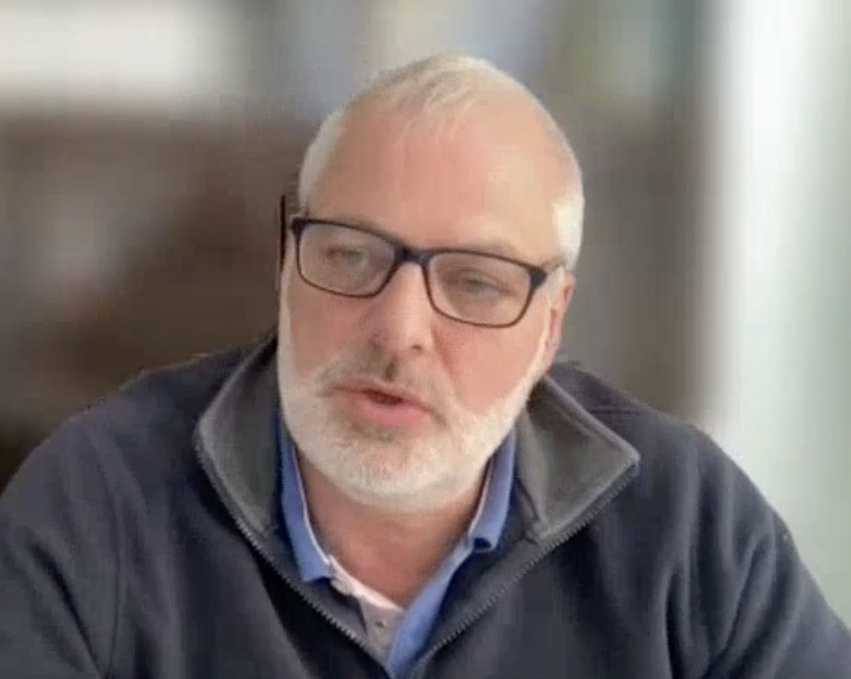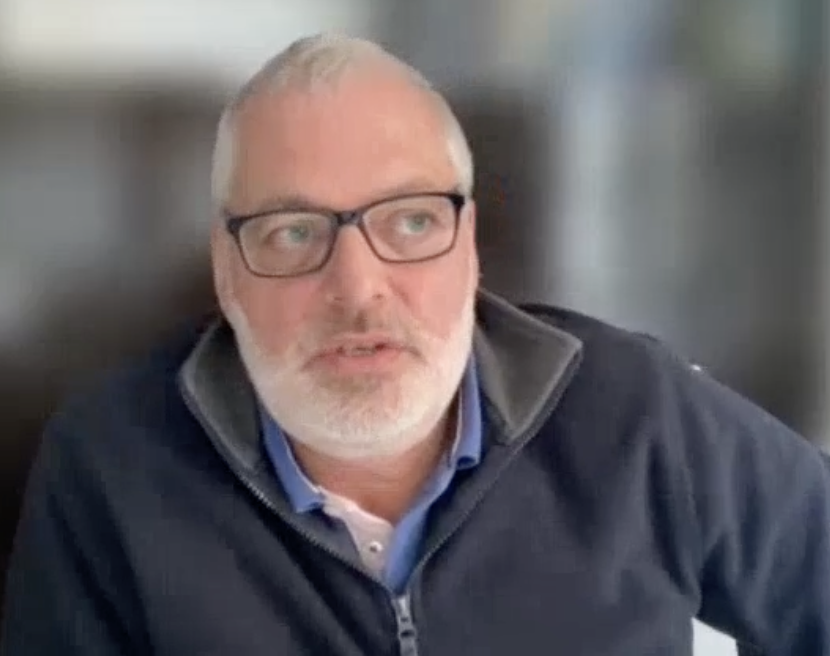At ConsensusPower we are on a mission about community-led access to renewable energy and the Anaerobic Digestion (AD) industry stands at the heart of it. To reflect our deep-seated commitment to innovation and regenerative practices, we are delving into a series of conversations with experts in the field to get first-hand insights into opportunities, challenges, in the field know-how and the integral role of technology in unifying these elements.
Expect a variety of content formats from us, where we embark on a journey designed to inform, educate and spread awareness on the importance and workings of Anaerobic Digestion and the key role it plays within the circular production and consumption model for both businesses and their surrounding communities.
* * *
Karim is a former Non-Executive Director of Biogen, a food waste Anaerobic Digestion company and he is now working as an adviser for SMEs in the property and construction sector. Karim has extensive knowledge and experience in the AD industry, especially the large-scale plants and the challenges they face.
Some of the highlights of our conversation with Karim cover topics such as digestate quality, feedstock supply, food waste, circularity, plus existing UK incentives in the industry and how regulated it is.
If Anaerobic Digestion is something totally new to you, I invite you to read our 4 min long article to give you a short and sweet summary of what it is, how it works and why it’s important.
Digestate: Quality and Regulation
Digestate, a bioproduct nutrient-rich substance produced by Anaerobic Digestion (AD), is a valuable biofertiliser that enhances soil health and crop growth, as well as reducing reliance on chemical fertilisers. However, when it comes to meeting quality and safety standards and environmental regulations, it poses some complexities for the AD industry.
The British Standards Institution Publicly Available Specification 100 (PAS 110) is a document that sets out the technical requirements for the AD process and the production of digestate, including the minimum quality criteria. It specifies requirements for a Quality Management System (QMS) to produce digestate to ensure it is consistently fit for its intended uses. It ensures that digestate is free of contaminants, pathogens and weed seeds, and has a consistent nutrient content and pH level, allowing it to be classified as a product rather than waste.
Meeting the PAS 110 specificities is not easy or cheap, especially for smaller AD operators. The costs and difficulties associated with meeting them can be quite high as it entails investing in laboratory facilities and technicians, conducting regular testing and analysis, maintaining quality control and documentation, and transporting the digestate to the end users. If the digestate fails to comply with the specs or the environmental regulations, high penalties can be applied and you’re at risk of having to let go of the whole batch of production.
As pointed out by Karim,

“
You can’t just put anything on the land. The Environment Agency drives the monitoring and regulation of the digestate with regards to the PAS 110 standards. (...) Setting up a lab and full-time technicians clearly is something that probably suits the larger players rather than the smaller ones (...) because of the investment required.”
Karim Khan
ex Non Executive Director, BioGen
Feedstock: Availability and Quality
Feedstock is the organic waste that is used as the raw material for the AD process, a crucial factor that determines the quantity and quality of biogas and digestate, as well as the environmental and economic performance of AD.
When it comes to feedstock, securing a reliable and consistent supply is a challenge directly related to the optimisation of the AD process and the feedstock mix available.
This is primarily because food waste is one of the most desirable sources of feedstock. After all, it’s highly biodegradable and has a high calorific value.
Karim noted the importance of efficient collection and food waste separation systems to ensure a steady and sufficient supply of this type of feedstock for existing and new AD facilities.
“We could have much more food waste for digestion, but [there’s roughly] 330 local authorities around the country and no consistent collection methodology for household food waste. The issue is that there’s a lot more food waste to be had for AD if household and commercial collections were better managed and coordinated.”
Farm slurry is often used as a complementary or alternative source of feedstock, especially in rural areas where food waste is scarce or costly to transport. Karim explained that farm slurry is a vast and underutilised resource that can provide a low-cost low-carbon feedstock for AD, as well as reduce the environmental impacts of manure management. Nonetheless, when compared to food waste, farm slurry is limited in terms of its low biogas yield, high water content and the inevitable odour issues.
Circularity: Challenges and Opportunities
Unfortunately, meeting the PAS 110 specifications results in not having a full deliverable circular economy. This is mainly due to the fact that all feedstock fed into the plant will partly result in waste that doesn’t have use.

“
It depends on what the feedstock is, really. If it's farm crops, it's grown fuel so to speak. There's an awful lot of fibre in that, and PAS 110 stipulates the percentage of fibre that is allowable. If it’s food waste, then over time it produces a lot of grit in the AD tanks, from products such as bone to eggshells.”
The leftover fibre which has gone through the digestion process can no longer be put on the fields, nor fed to animals. The same goes for the grit. For either scenario, the question remains: what can be done with these procedural remains?
As per PAS 110, “any digested, controlled wastes that do not conform to this PAS (...) might have “waste” status. Evidence would be reviewed and a “waste” or “product” status decision made by the regulator. If “waste”, its transportation, storage and use after dispatch by the producer would be subject to waste regulatory controls (...)”[1]
If it wasn’t for the leftover “waste”, AD could be considered a perfect model for the circular bioeconomy. One possible way to address this is to find alternative uses or markets for the leftover fibre and grit, such as composting, landscaping, construction or bioplastics. This would reduce the amount of waste disposed of at the end of the AD process and would create new value streams for the industry.
Electricity: Price and Incentives
Electricity is the main product and revenue stream of AD. It involves burning biogas in generators and can be used on-site for the AD plants’ own consumption and/or sold to the grid. AD is seen as a win-win solution for not only reducing waste but also lowering CO2 emissions while producing renewable energy and fertiliser, playing a significant role in the UK's efforts to meet climate change targets.
Karim explained that the impact of electricity prices and incentives are directly related to the profitability and viability of AD plants, noting that they are the key drivers for the industry's financial health.

“
The electricity price is volatile throughout the year due to demand. So you have to factor that into your financial modelling which leads you into hedging and to having someone on your team for that. If you've got your hedging right, fantastic, you have mitigated your risk and maintained an acceptable return. If you've got your hedging wrong, you probably left money on the table.”
He described how the Feed-In Tariff (FIT), the Renewable Heat Incentive (RHI) and the Green Gas Support Scheme (GGSS) have supported the growth and development of the industry by providing guaranteed, long-term payments for electricity or heat generation from biogas. Renewable Energy Guarantees of Origin (REGOs), which certify that electricity was generated from renewable sources, can also be sold or traded as a separate commodity.
However, the reduction or termination of the FIT and the RHI incentives, the limited availability and eligibility of the GGSS, and the fluctuations and variations of the electricity and REGO markets constitute big risks for the future of the industry, particularly for smaller business models with limited strategies.
“[In the early days] AD plants sparked a lot of interest. And then, like most things, the market matured. You know, the small players have been snapped up by the big ones and we're now in a situation where you've got to have that economy of scale to make it economically advantageous. The feed-in tariffs and the other incentives having diminished.”
* * *
There’s still much to be done in the industry. It’s costly, highly diverse and yet so essential. AD plant operators need more support from governmental bodies and agencies. They need investment in research and new skills, incentives for SMEs, training on hedging strategies and electricity price negotiation, as well as diversification of their revenues and products.
The fact that electricity prices are so volatile and uncertain, tied with competing prices from other sources of renewable energy, and the reduction or termination of incentives, represents some of the major challenges in the AD industry, along with the lack of functional regional structures to allow better cooperation between the key entities, the end users and businesses who produce waste.
[1]PAS110_2014.pdf (wrap.ngo), p. 36, 13.5
